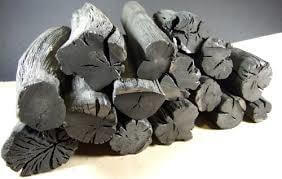Where does Binchotan Charcoal come from?
Also known as White Charcoal, Binchotan Charcoal is a type of Activated Charcoal that has been traditionally made for over 300 years by charcoal makers in the Kishu province of Wakayama in Japan. Perfecting a technique that produced charcoal of extraordinary purity, they used the extra hard Ubame Oak that grew in the forested hills of Kishu, carefully and sustainably choosing branch clippings, stacking them inside large kilns built into the mountains and then burning them at low temperatures over several weeks to control the Oxygen flow. Lastly, they increased the temperature inside the kiln to above 1000 degrees and monitored the colour of the smoke. Once it was clear, all impurities had been burnt away.

Binchotan Charcoal is nearly 100% carbon. Called White Charcoal due to the white ash residue, the name ‘Binchotan’ came from a famous charcoal artisan, Binchoya Chozaemon. The secret Binchotan process eventually became known in other parts of Japan, but Kishu Binchotan remains the finest, densest and purest form and is still handmade through a process passed down through generations.
How does Binchotan Charcoal work?

In the 20th Century, scientists began to study the benefits of Binchotan and its properties, finding that it had a micro-porous structure with 270 square metres of internal surface in each gram. Through a process of ‘adsorption’, whereby particles are attracted and adhere to the surface, the pores cleanse the environment by adsorbing gases from the atmosphere, electromagnetic waves and radio frequencies as well as chlorine and heavy metals from water. Radiation is also weakened as it passes through Binchotan. Binchotan creates ‘good energy’ by giving off negative ions. Negative ions are atoms that carry a negative electric charge which attracts positive ions in the air, such as carbon dioxide molecules. An excessive amount of positive ions in the environment can affect respiratory function and cause fatigue. Binchotan adsorbs these positive ions and instead releases the negative ions found in natural energy such as waves, waterfalls and thunderstorms.